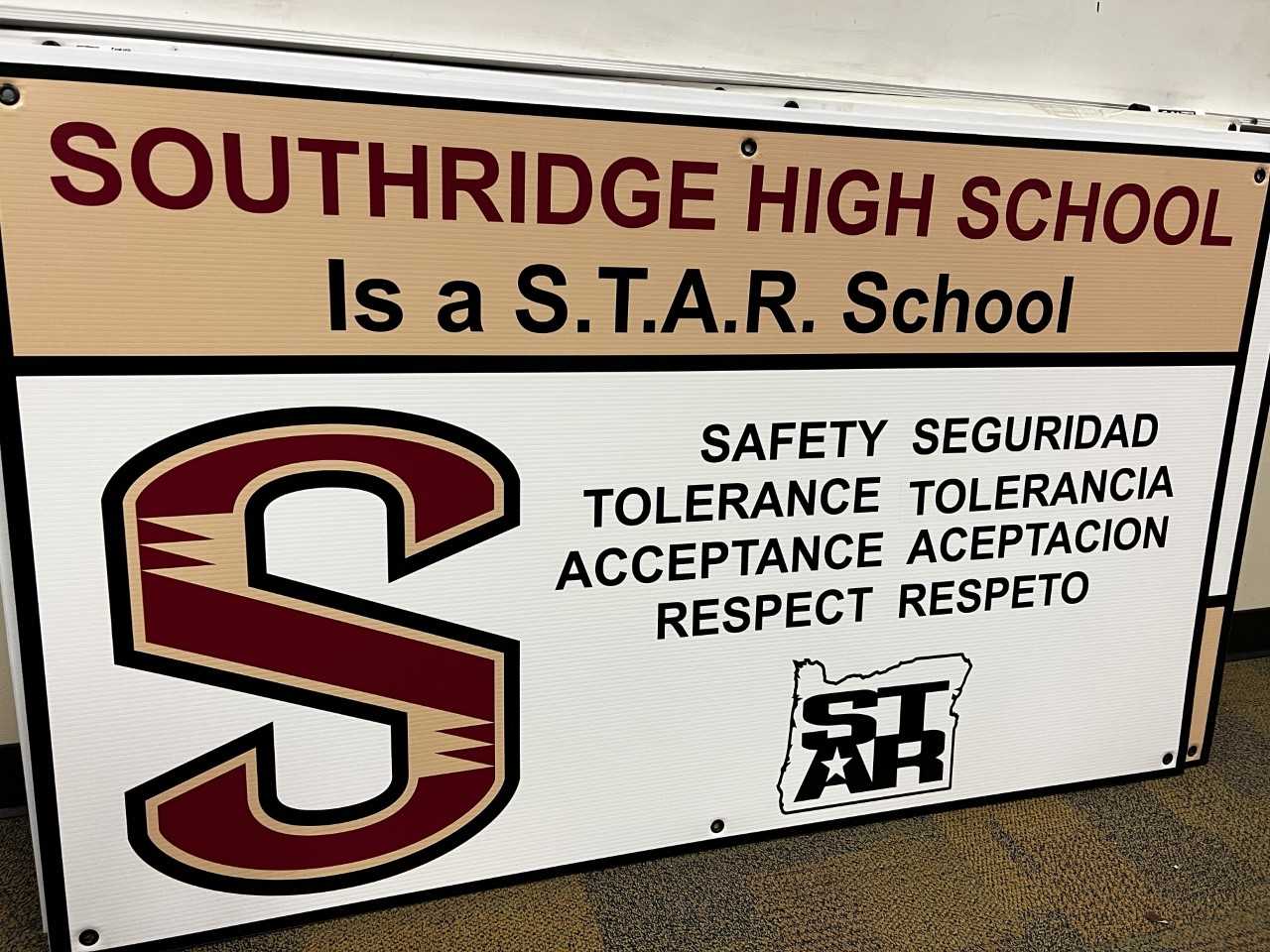
The S.T.A.R. initiative, introduced by the OSAA in the fall of 2021 to provide a model to disrupt racism and combat discrimination at high school athletic events, is taking root throughout the state.
The OSAA has certified eight of its members as S.T.A.R. schools after their applications were approved in a review by the association staff.
Hood River Valley, Catlin Gabel, Jesuit, Tillamook, Umatilla, Nixyaawii, Heppner and Southridge each will receive a banner for their school and $1,000 toward their continued efforts in implementing S.T.A.R. and other equity-based initiatives. They also will be recognized on the OSAA website.
“Many athletic directors that have walked through the application recognized that they have already implemented the majority of the expectations.'” OSAA assistant executive director KT Emerson said.
“In our discussions with the athletic directors, the goal is to be reflective in their current practice and collaborate on ways to continue to make improvements. And in subsequent years, when we re-evaluate their S.T.A.R. school application, we'll ask, 'What has changed? What have you learned? And what is new?'”
On the application, schools are asked how they model the principles and strategies that align with S.T.A.R., which stands for safety, tolerance, acceptance and respect.
Schools describe their event management plan and the strategies they employ with their own participants, coaches and spectators. They are asked if they read one of the S.T.A.R. public address scripts at the start of every competition.
They must describe their incident response protocol and training procedures. They are asked about any other equity or sportsmanship efforts they implement in their programs.
Southridge athletic director Trish Shoemaker said the values promoted in the S.T.A.R. initiative line up with what she began promoting at the school when she took the position in 2018.
“Talking to some of our athletes – because we are a fairly diverse school – they have had some experiences when they went to other schools that were extremely unpleasant,” Shoemaker said. “We need to make this a safe space for them to come and play sports.
“When the OSAA really took a big stance with S.T.A.R., I don't know if it was all-changing, but it certainly encouraged the initiative that we've been working on.”
Last year, Southridge created S.T.A.R. posters with the school logo and displayed them on campus. This winter, the school will begin recognizing a model spectator at each athletic event, presenting a S.T.A.R. t-shirt designed by the marketing class.
Shoemaker said S.T.A.R. topics have become part of Metro League meetings.
“We have fan protocols just among the Metro League, so when we meet every year, we ask, when we come to each other's schools, 'What are we doing to support good sportsmanship?'” Shoemaker said. “And we all need to be teaching that within our schools.”
Umatilla athletic director Scott Bow said he pursued the S.T.A.R. designation for his school because of “the message that it brings.”
“Many of these things, some people don't even know they're issues until they're addressed as issues,” Bow said. “By pre-addressing some situations, it helps deter what could possibly take place.”
Umatilla has taken the step of having its event monitors wear highly visible, bright-orange jackets.
“We made it a point to say, 'Hey, if you're noticing any issues, find someone in an orange jacket to report immediately so we can address it,'” Bow said.
The reading of the S.T.A.R. script on public address has become a staple at many OSAA events. In the development of the S.T.A.R. public address script, the OSAA consulted schools and a collaborative group that included a public relations firm to create multiple options for schools to use.
The multiple options allow schools to engage their spectators with different messages ensuring consistent expectations are emphasized.
“Sometimes schools have students read it, which is extremely powerful,” Emerson said. “Schools can make it their own, too. If there's a special night, some sort of theme night, they can add pieces of that.”
Wells, which is in the process of finishing its application, is part of a push to implement S.T.A.R. principles in the Portland Interscholastic League. Wells has student-athlete leadership teams (SALT) that promote the philosophy within the school and work with Positive Coaching Alliance (PCA) to cultivate inclusiveness, emphasizing student-section behavior.
Emerson said the OSAA is encouraged by the range of responses it has received from schools, from district-wide initiatives to volunteer activities in youth programs.
“It's great to try to include the younger ones coming up to make sure that they're ready for what's expected at the high school,” Emerson said.
The OSAA Foundation has set aside $50,000 each year for the S.T.A.R. initiative. Schools can apply for a grant of up to $2,000 to pursue their work with the initiative.
Emerson said the OSAA has yet to decide if S.T.A.R. schools will need to re-apply for the designation in the following school year. For now, the OSAA plans an end-of-year review with each S.T.A.R. School.
“We've also discussed a tiered process, where schools could earn a blue-level S.T.A.R. school, a top level, where you're bringing in speakers, and going to a greater depth, of really trying to drive the community and spread the effort,” Emerson said.









